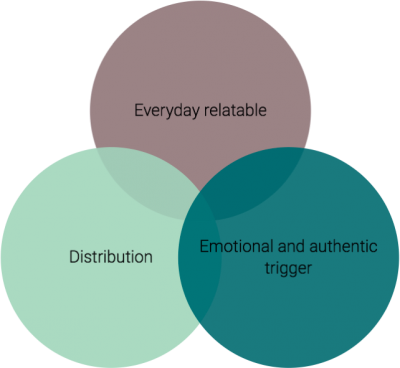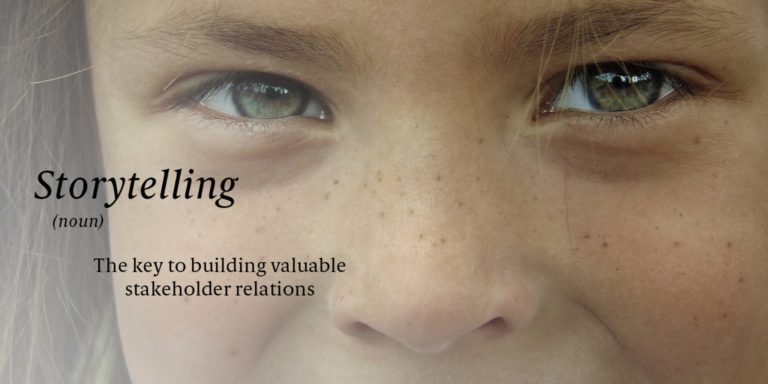The dream for any creative marketer with love for concepts and digital campaigns. To hit the nail on the head and ride that sweet wave of SoMe fame with that oh so catchy hashtag making your Analytics account take off like there was no tomorrow. Sounds good right? But as with most things here in life, good things often don’t come easy. And the same goes for virality – rather that be online or offline (preferably a combination).
So what might seem to be the worst title ever for a blog post, is simply an acknowledgement of the many factors – that we can’t always control or predict – which determines if a campaign goes viral or not. There is no perfect formula and no how-to guide on viral marketing with a 100% succes rate. But that might be a good thing. If everybody could do it, by just following a recipe, the concept would lose it’s power and value. With that said, being a hungry creative myself, I’m constantly scouting succesful cases on the lookout for patterns in approach, data and message, trying to extract some sort of guiding formula to apply on our clients’ projects. The next ice bucket challenge or #metoo is just waiting to be discovered.
The basics of viral marketing
So before I get started on the actual insights I’ve gathered over the years, let’s just briefly define viral marketing and why it is such a powerful trigger that can make or break your brand. The core definition of viral is a piece of content (can be anything from a two-word hashtag to a 30 minute video) that spreads through word of mouth with little or no help from paid media. And it is exactly this consumer generated organic reach that makes good content go viral, because people are voluntarily identifying themselves with the content to an extent where they wish to communicate an opinion or reach to their peers through that content, creating a much higher level of interest from those peers than you would obtain from direct organisation-to-consumer branding. However, virality can also occur through content not originating from your company and we have many tragic examples of brands not surviving negative opinions if the virality first kicks in. But let’s safe that for the experts in crisis communication.
#1 Focus on small scale virality
Small scale and viral marketing might seem contradictory, but my point is to design your campaign with one clear target group in mind. It is really rare that you can create a concept and a message that everybody can relate to and at the same time makes sense for your brand to communicate. Virality is only valuable on the bottom line if it leads to a boost in conversions. A simple rule of thumb in online marketing is that broad reach does not equal higher engagement and often a smaller and more targeted reach result in high level of interaction from the consumer. But of course it is a balancing act, cause if we go too niche, the effect of viral marketing is lost. So determine your target group and design your campaign concept based on the insights you can gather about their life, preferences and interest.
#2 Shareability
This one is no surprise. But it is easier said than done. Depending on your target audience, shareability comes with varying degrees of difficulty and we often here that heavy users are harder to engage due to the constant exposure of content. But there is more to the story. According to recent statistics on the social media landscape in the Nordics, the 15-25-year-olds are leaving Facebook and prefer to use Instagram and Snapchat for sharing their everyday life(1). Other recent sources tell us that Instagram is kicking Snapchat’s ass(2). And then there is the new wave of YouTube stars that has captured the attention of the teens(3). The point I’m trying to make is that user preferences is everything but consistent and stable, and the first step to creating shareable content is knowing exactly where your target audience engage and spend their time. It might not be what you think. A personal observation I made over the last few months, is that even though Facebook is still the largest SoMe channel, it is becoming the home of funny memes and ads. Organically shared content is fading into the background (want more on that story? read this: https://www.linkedin.com/feed/update/urn:li:activity:6330514865664458752).
So if we just get the distribution right, the content is secondary? Of course not. Based on my experience and observations, I see three main components that must be considered and done right, if your campaign should have a chance to go viral.

Everyday relatable is about knowing your target audience, their lingo, what they spend their time on, what’s trending, what’s hot and what’s not. Here we are back to one of my earlier arguments. That people tend to share if they can identify with the content. A highly effective way to find your next everyday relatable for your campaign is to draw from anthropological and ethnographic methods to gain deep insights into your target group’s behaviour and preferences. But less resources can also get you far. Try to observe in your everyday life, if their are patterns that could be linked to your brand message. It can be everything from trending topics or events to everyday habits and cultural norms that is part of the general lifestyle among your target group. This one can be time consuming, but not necessarily difficult. If you rewire your mindset to observe through a marketers lense, the answer might be right in front of you. On a more practical note, free resources like Whale and Google Trends can help you get an overview of what’s trending on the social and digital landscape.
Content that trigger an emotional response
When you’ve found the trend, norm or preference to tab into, the second component of strong viral marketing is the content in itself. First, determine the emotion you want to trigger – happiness, provocation, anger, sadness, excitement etc. More than often, the topic or norm you’ve decided to tab into will naturally determine the emotion to trigger. Second, it is important to keep branding at an absolute minimum. Too much branding will cause your audience to disregard the content as banal, salesy and they will not be inclined to share because they can no longer identify with your message or feel a personal attachment. People relate to people, not brands. Finally, if you work with video, be conscious about the emotional flow. The days of ‘as short as possible’ are long gone, and your video on Facebook can even be a short documentary as long as you remember to keep your audience intrigued throughout. Use the first 3 second to capture attention and continue with a switching flow between high and low emotional activation to retain attention without overwhelming the viewer (4).
#3 Content Distribution is king
The third component is – as already mentioned – distribution. You might have heard this sentence: “Content is king. Distribution is queen”. But from my experience, the two components are equally important and one can not exist without the other. We already talked about the importance of understanding where your target group is most engaged (which is not necessarily the same channel they spend most of their time on), and the second most important thing must be to tailor the format of your content to the channel you choose. However, what I think is often overlooked when we talk content distribution, is looking into alternative channels where your audience might not expect to be exposed to content. I personally prefer to work with a mix of offline and online distribution that feeds into each other and comprise a wide spectrum of customer touch points. Especially offline touchpoints allow you to be creative. A great example is this one from the Danish retailer Coop. An offline and unbranded event enables the creation of an online campaign video that captures true authenticity because of it’s emotional and non-commercial trigger that is highly shareable because it is everyday relatable for the target group. Bum viral marketing.
#4 Using influencers smart
In the beginning when I mentioned #metoo it was a bit misleading, cause it is not a campaign. It was a twitter post by actress Alyssa Milano who encouraged young women who had experienced sexual assault or harassment to share their experience. But the example serves a good point. The hashtag went viral because of two things; the emotional weight, relatability (tragically) and seriousness of the message and that it was initiated by a famous actress. We have many examples of viral marketing campaigns that succeeded because a recognized face was used as ambassador. This brings us back to the importance of relatability. If that celebrity has a positive correlation to our interests (rather that be sports, music, film, politics etc.) we can match the content to the identity we wish to portray and de facto are we more likely to share. But a celebrity is not necessarily the right way to go (and budget is a another discussion). Remember my earlier point about small scale virality? If you decide to create an ambassador profile for your campaign, try to prioritize your search in this order: 1) Is he/she a natural spokesperson for our message and brand? Would he/she share our content voluntarily? 2) Does he/she have a follower base that match our target group? 3) And then finally, what is the reach and engagement of his/her follower base (tip: always prioritize engagement over reach).
#5 Don’t sell. Just don’t.
This one doesn’t really need any explanation. Your brand created the campaign and if your message and visual communication is strong enough, it will automatically link your brand to the content in the viewers mind. We don’t identify with brands or products. We identify with the human interpretation of that brand or product. (5) It is that simple.
Concluding remarks
- Don’t think that viral marketing is always about reaching as many as possible. Your main priority should be to go viral among your target group. The more adapted your campaign is to your target group, the better is the chance that you will turn impressions into conversions.
- Is your content shareable? Make sure you consider the three components – distribution, everyday relatable and emotional trigger – when you develop your campaign concept.
- Be creative about your distribution. Capture peoples attention where they don’t expect it and combine offline and online channels.
- Influencers as ambassadors can be a powerfull tool, but make sure you choose an influencer that match your brand and has a presence among your target group.
- No sales pitch. End of story.
I just merely scratched the surface of the concept viral marketing and as you may have noticed, this article is not even close to being a how-to template, but I don’t believe their is such thing when it comes to viral marketing. However, I hope it serves as good inspiration for strategizing your next campaign. In coming blog posts, I will try to dig a bit deeper into the three main components I believe make up a strong campaign with virality potential.
References:
(1) https://www.retriever-info.com/the-nordic-social-media-landscape/
(2) http://www.telegraph.co.uk/technology/2017/04/13/instagram-stories-overtakes-snapchat-200m-daily-users/
(3) http://variety.com/2016/digital/news/millennial-gen-z-youtube-netflix-video-social-tv-study-1201740829/
(4) Libert, K & Tynski, K (2013). Research: The Emotions that Make Marketing Campaigns Go Viral. Harward Business Review.
(6) Sutter, B (2016). Want To Be Successful With Content Marketing? Teach, Don’t Sell. Harward Business Review.
Join our newsletter and get notified about future blog posts.

